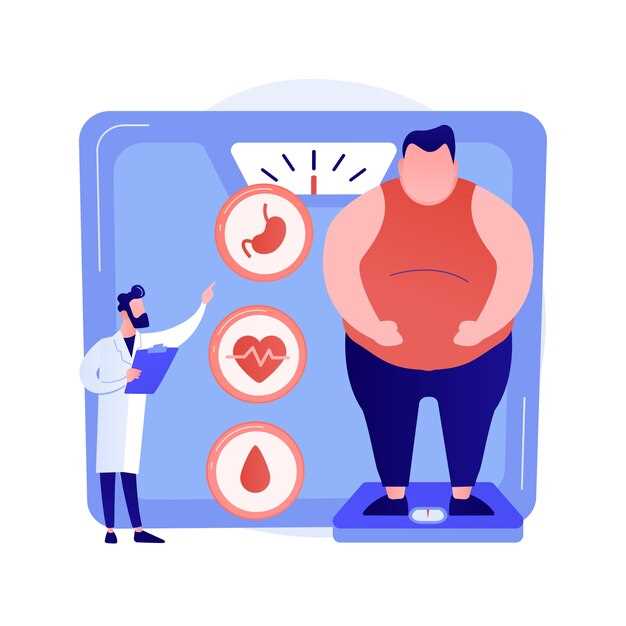Understanding the Science of Belly Fat Causes, Risks, and Solutions

Embarking on a captivating journey into the intricate world of excess abdominal fat, we delve into the enigmatic realm of adipose tissue accumulation in the midsection. This captivating exploration aims to unravel the origins, perils, and potential solutions surrounding this prevalent health concern.
Within the human body, an intriguing phenomenon occurs as adipocytes, or fat cells, accumulate in the abdominal region. This intricate process, often referred to as visceral fat deposition, poses a myriad of risks to our overall well-being. By examining the intricate mechanisms behind this accumulation, we gain valuable insights into the potential causes and contributing factors.
Unveiling the hidden dangers that lie beneath the surface, excess abdominal fat has been linked to a multitude of health risks. From cardiovascular diseases to metabolic disorders, the implications of carrying excess weight around the midsection extend far beyond mere aesthetics. Understanding these risks empowers us to take proactive measures towards achieving a healthier lifestyle.
Fortunately, amidst the complex web of causes and risks, effective solutions emerge as beacons of hope. By adopting a multifaceted approach encompassing dietary modifications, regular physical activity, and targeted exercises, individuals can embark on a transformative journey towards shedding excess abdominal fat. These evidence-based remedies offer promising results, empowering individuals to reclaim their health and vitality.
The Link Between Belly Fat and Health Issues
Belly fat has been found to have a significant association with various health problems, highlighting the importance of understanding and addressing this issue. The accumulation of excess fat around the abdomen can lead to a range of detrimental effects on overall health and well-being.
Research has shown that individuals with excess belly fat are at a higher risk of developing serious health conditions such as cardiovascular disease, type 2 diabetes, and certain types of cancer. This connection between belly fat and health issues is not merely coincidental, but rather a result of the complex interplay between various physiological processes.
One of the key factors contributing to the link between belly fat and health problems is the release of inflammatory substances by fat cells located in the abdominal area. These substances, known as adipokines, can disrupt normal metabolic functions and promote the development of chronic inflammation throughout the body.
In addition, belly fat is closely associated with insulin resistance, a condition in which the body’s cells become less responsive to the hormone insulin. This can lead to elevated blood sugar levels and an increased risk of developing type 2 diabetes. Insulin resistance is also linked to other metabolic disorders, including high blood pressure and abnormal cholesterol levels.
Furthermore, excess belly fat can have a negative impact on hormone regulation, particularly in women. The production of estrogen, a hormone crucial for reproductive health, can be disrupted by the presence of excess abdominal fat. This disruption can contribute to hormonal imbalances and increase the risk of conditions such as polycystic ovary syndrome (PCOS) and infertility.
Addressing the link between belly fat and health issues requires a multifaceted approach. Adopting a healthy lifestyle that includes regular physical activity, a balanced diet, and stress management can help reduce belly fat and mitigate the associated health risks. Additionally, targeted exercises that focus on the abdominal muscles can help tone and strengthen the core, contributing to a healthier body composition.
In conclusion, understanding the link between belly fat and health issues is crucial for promoting overall well-being. By recognizing the detrimental effects of excess abdominal fat and implementing effective strategies to address this issue, individuals can significantly improve their health outcomes and reduce the risk of developing serious medical conditions.
Understanding the Causes of Abdominal Fat

In this section, we will delve into the factors that contribute to the accumulation of excess fat in the abdominal region. By gaining a deeper understanding of these causes, we can better comprehend the complexities of belly fat and its impact on overall health.
Genetic Predisposition
One of the key factors influencing the development of abdominal fat is genetic predisposition. Certain individuals may have inherited genes that make them more prone to storing fat in the belly area. While genetics play a role, it is important to note that lifestyle choices and environmental factors also contribute significantly to the accumulation of belly fat.
Hormonal Imbalances
Hormonal imbalances can also contribute to the accumulation of belly fat. Hormones such as cortisol, insulin, and estrogen play a crucial role in regulating fat storage and metabolism. Imbalances in these hormones can lead to increased fat deposition in the abdominal region. Factors such as chronic stress, poor diet, lack of exercise, and inadequate sleep can disrupt hormonal balance and contribute to the development of abdominal fat.
| Factors Contributing to Abdominal Fat | Effects on Belly Fat Accumulation |
|---|---|
| Poor Diet | A diet high in processed foods, sugar, and unhealthy fats can promote abdominal fat storage. |
| Lack of Physical Activity | Sedentary lifestyle and lack of exercise can lead to increased belly fat accumulation. |
| Excessive Alcohol Consumption | Regular and excessive alcohol intake can contribute to the development of abdominal fat. |
| Age | As individuals age, their metabolism slows down, making it easier to gain belly fat. |
| Smoking | Smoking has been linked to increased abdominal fat deposition and a higher risk of metabolic disorders. |
By understanding the various causes of abdominal fat, we can take proactive steps to address and prevent its accumulation. Through a combination of healthy lifestyle choices, regular exercise, and a balanced diet, individuals can work towards reducing belly fat and improving their overall well-being.
The Role of Genetics in Belly Fat Accumulation

Genetics plays a significant role in the accumulation of excess fat around the abdominal area. The inheritance of certain genes can predispose individuals to store fat in this specific region, leading to the development of belly fat. While environmental factors such as diet and physical activity also contribute to the accumulation of belly fat, understanding the genetic factors involved can provide valuable insights into the underlying mechanisms.
Research has shown that variations in specific genes can influence an individual’s propensity to accumulate belly fat. These genetic variations can affect various aspects of fat metabolism, including the storage and breakdown of fat cells. Additionally, certain genes may impact appetite regulation and the distribution of fat throughout the body, further influencing the development of belly fat.
One such gene that has been extensively studied in relation to belly fat accumulation is the FTO gene. Variations in this gene have been associated with increased abdominal fat and a higher risk of obesity. The FTO gene is involved in regulating energy balance and appetite, making it a key player in the development of excess belly fat.
Other genes, such as the MC4R gene, have also been implicated in belly fat accumulation. Variations in this gene can affect the body’s ability to regulate food intake and energy expenditure, leading to an increased likelihood of developing abdominal obesity. Understanding the role of these genes can help identify individuals who may be more susceptible to belly fat accumulation and allow for targeted interventions and prevention strategies.
| Genes | Role in Belly Fat Accumulation |
|---|---|
| FTO | Regulates energy balance and appetite |
| MC4R | Affects food intake and energy expenditure |
It is important to note that while genetics can predispose individuals to belly fat accumulation, it is not the sole determining factor. Lifestyle choices, such as diet and exercise, still play a significant role in managing and reducing belly fat. By understanding the genetic factors involved, individuals can make informed decisions about their lifestyle and implement targeted strategies to effectively address belly fat accumulation.
The Impact of Lifestyle Choices on Belly Fat
Understanding how our daily habits and choices can affect the accumulation of excess fat around the midsection is crucial in addressing the issue of belly fat. By examining the various lifestyle choices we make, we can gain insight into the factors that contribute to the development and persistence of this stubborn fat.
Our lifestyle choices encompass a wide range of behaviors and habits that influence our overall health and well-being. These choices include our dietary preferences, level of physical activity, stress management techniques, sleep patterns, and even our social interactions. Each of these aspects plays a role in determining the amount of belly fat we may accumulate.
When it comes to diet, the types and quantities of food we consume can significantly impact the distribution of fat in our bodies. Consuming a diet high in processed foods, added sugars, and unhealthy fats can contribute to the accumulation of belly fat. On the other hand, opting for a balanced diet rich in fruits, vegetables, lean proteins, and whole grains can help reduce belly fat and promote overall weight loss.
Physical activity is another crucial factor in managing belly fat. Engaging in regular exercise not only helps burn calories but also promotes the development of lean muscle mass. This increase in muscle mass can boost metabolism and aid in the reduction of belly fat. Incorporating both cardiovascular exercises, such as running or swimming, and strength training exercises, like weightlifting or yoga, can be particularly effective in targeting belly fat.
Stress management techniques also play a role in the accumulation of belly fat. When we experience chronic stress, our bodies release cortisol, a hormone that can contribute to the storage of fat, particularly around the abdomen. Implementing stress-reducing activities, such as meditation, deep breathing exercises, or engaging in hobbies, can help lower cortisol levels and reduce belly fat.
Furthermore, the quality and duration of our sleep can impact our body’s ability to regulate weight and fat distribution. Lack of sleep has been linked to increased hunger and cravings for unhealthy foods, which can lead to weight gain and the accumulation of belly fat. Prioritizing a consistent sleep schedule and practicing good sleep hygiene can support healthy weight management and reduce belly fat.
Lastly, our social interactions and environment can influence our lifestyle choices and, consequently, our belly fat levels. Surrounding ourselves with individuals who prioritize healthy habits and support our goals can positively impact our own choices. Additionally, creating an environment that promotes physical activity and healthy eating, such as having access to nutritious food options and engaging in active hobbies, can contribute to the reduction of belly fat.
In conclusion, the impact of lifestyle choices on belly fat is significant. By making conscious decisions regarding our diet, physical activity, stress management, sleep patterns, and social interactions, we can effectively reduce belly fat and improve our overall health and well-being.
Exploring Effective Strategies to Reduce Belly Fat
In this section, we will delve into various successful approaches to diminish abdominal fat. We will explore practical methods, backed by scientific research, that can help individuals achieve their goal of a slimmer waistline and improved overall health.
1. Adopting a Balanced and Nutritious Diet
One of the key strategies to reduce belly fat is to focus on consuming a balanced and nutritious diet. This involves incorporating a variety of whole foods such as fruits, vegetables, lean proteins, and whole grains. Avoiding processed foods, sugary beverages, and excessive intake of saturated fats can contribute to a healthier body composition.
2. Engaging in Regular Physical Activity
Regular physical activity plays a vital role in reducing belly fat. Engaging in aerobic exercises, such as brisk walking, jogging, cycling, or swimming, can help burn calories and promote overall weight loss. Additionally, incorporating strength training exercises can help build lean muscle mass, which in turn increases metabolism and aids in fat loss.
3. Managing Stress Levels
High levels of stress can contribute to the accumulation of belly fat. Implementing stress management techniques, such as practicing mindfulness, meditation, or engaging in hobbies, can help reduce stress levels and prevent emotional eating, which often leads to weight gain.
4. Getting Sufficient Sleep
Adequate sleep is crucial for maintaining a healthy weight and reducing belly fat. Lack of sleep can disrupt hormonal balance, leading to increased appetite and cravings for unhealthy foods. Aim for 7-9 hours of quality sleep each night to support your weight loss efforts.
5. Drinking Plenty of Water
Staying hydrated is essential for overall health and can aid in reducing belly fat. Drinking an adequate amount of water throughout the day helps boost metabolism, suppresses appetite, and promotes proper digestion. Aim to drink at least 8 glasses of water daily.
- Include a variety of whole foods in your diet.
- Engage in regular aerobic and strength training exercises.
- Practice stress management techniques.
- Prioritize getting sufficient sleep.
- Stay hydrated by drinking plenty of water.
By implementing these effective strategies, individuals can take proactive steps towards reducing belly fat and improving their overall well-being.
The Importance of Exercise and Diet in Belly Fat Reduction
When it comes to reducing belly fat, two key factors play a crucial role: exercise and diet. These essential components are vital in achieving effective and long-lasting results in the battle against excess abdominal fat.
Exercise is a fundamental aspect of any successful belly fat reduction plan. Engaging in regular physical activity helps to burn calories, increase metabolism, and promote overall weight loss. It is important to incorporate a combination of cardiovascular exercises, such as running or cycling, and strength training exercises, such as weightlifting or bodyweight exercises, to target both the fat layer and the underlying muscles.
Diet is equally important in the quest for a flatter stomach. A healthy and balanced diet that is low in processed foods, saturated fats, and added sugars can significantly contribute to belly fat reduction. Instead, focus on consuming nutrient-dense foods such as fruits, vegetables, lean proteins, and whole grains. Additionally, portion control and mindful eating practices can help prevent overeating and promote weight loss.
By combining regular exercise and a healthy diet, individuals can effectively reduce belly fat and improve their overall health. It is important to remember that consistency and patience are key, as belly fat reduction takes time and effort. With dedication and a holistic approach, achieving a trimmer waistline is within reach.

